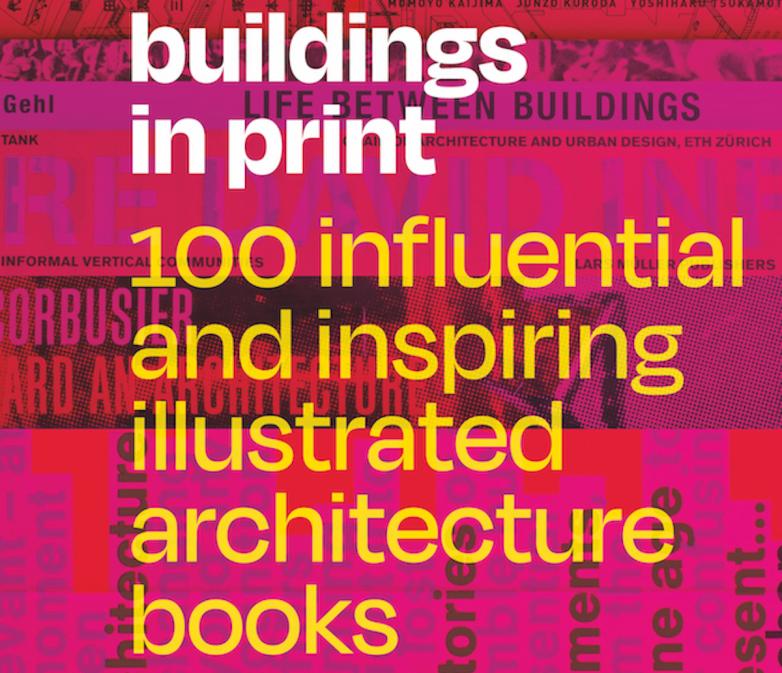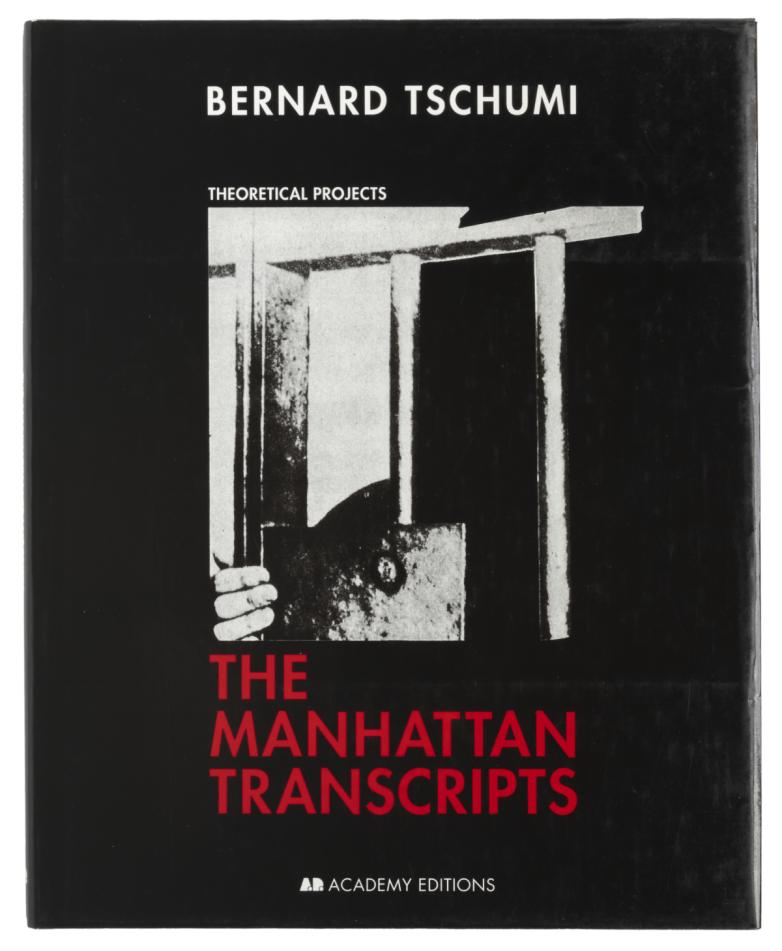RB: Can you tell us about a favorite (or two) from your collection?
JH: Two books that impacted my development as an architect and someone who writes about architecture come to mind. The one that’s in Buildings in Print is The Manhattan Transcripts by Bernard Tschumi, first published in 1981 and then expanded a decade later. Originally a series of gallery shows, the book uses illustrations that are more cinematic than architectural to argue for the divorcing of function from form, upending Louis Sullivan's famous dictum that "form ever follows function." The book's arguments and innovative methods of notation have influenced many architects since, myself included.
The second book, which isn’t in Buildings in Print because it doesn’t have any illustrations, is File Under Architecture by Herbert Muschamp, published by MIT Press in 1974. I read the book—an enthusiastic, freewheeling critique of architecture from the future New York Times architecture critic—after checking it out at the public library during my senior year in high school (I've since found a copy for my library). The book's unique design, with corrugated cardboard covers, yellow-taped spine, brown paper, and Courier font, is what led me to pull it off the shelf and check it out, but it was Muschamp's words that entranced me. While the book didn't single-handedly push me to go to architecture school, it definitely played a part in getting me interested in writing about architecture.
RB: What is the “holy grail” of illustrated architecture books?
JH: Alvin Boyarsky, head of the Architectural Association in London from 1971 until his death in 1990, put out a number of publication series that served to promote the efforts of the school but also, more importantly, made publishing an integral part of architecture. None are more desirable than the “Folio” series, which consisted of fourteen boxed sets, each with around two-dozen, 12-inch-square loose prints of drawings by an architect exhibiting at the school. Though not bound, these catalogs—as much art as architecture and suitable for framing—are extremely rare and expensive, especially those by architects who would eventually gain international fame, including Tschumi, Zaha Hadid, Daniel Libeskind, and Peter Eisenman.
For bound architecture books, one such “holy grail” is the monograph on Swiss architect Peter Zumthor published by Lars Müller in 1998. Peter Zumthor Works: Buildings and Projects 1979–1997 features black linen-wrapped boards without a dust jacket, primarily black-and-white photographs by Hélène Binet, and drawings and brief descriptions by the architect—a minimalist expression aligned with Zumthor’s minimalist designs. Many books on Zumthor have been published since, but they have not satiated the desire of architects to get ahold of this early book, one that, unlike the AA Folios, has a cherished place on my bookshelf.


















